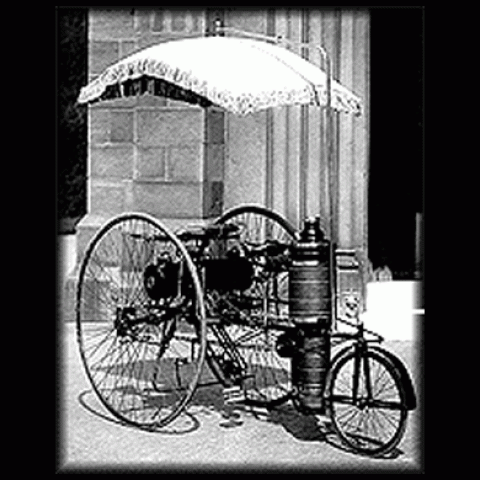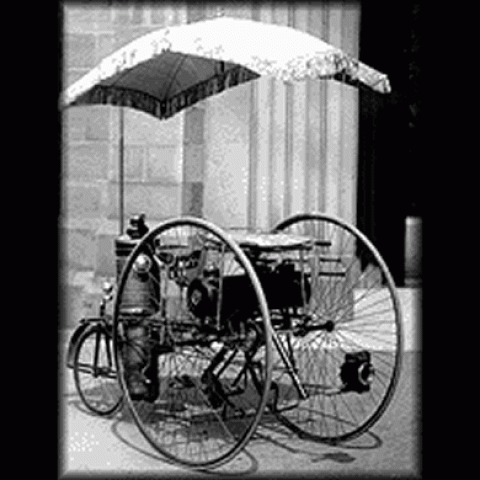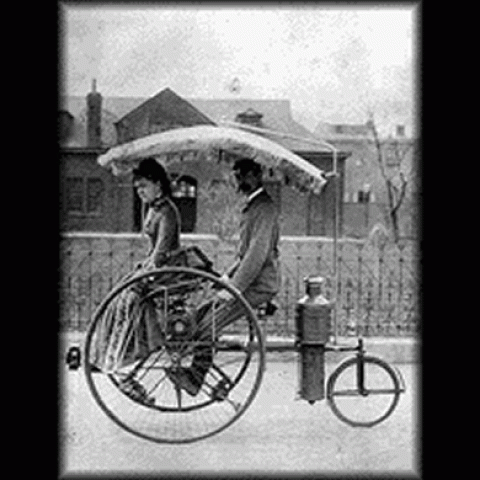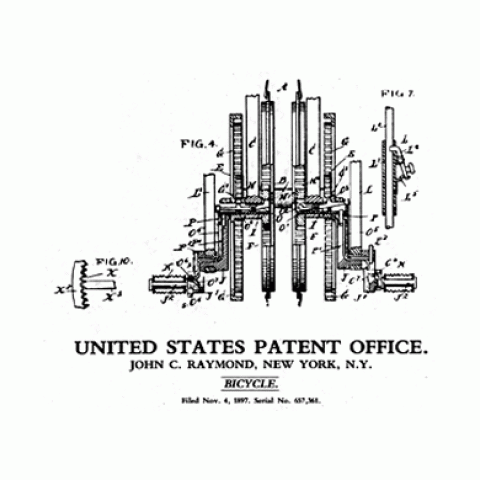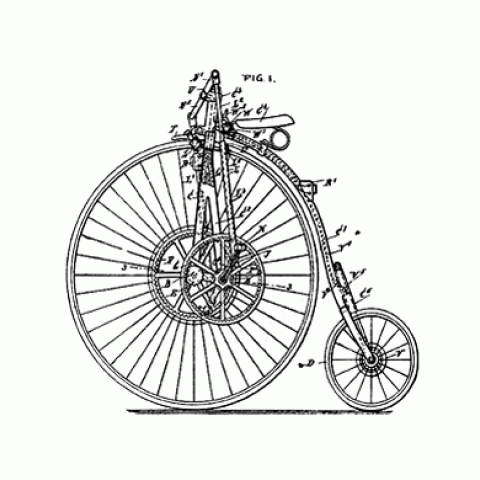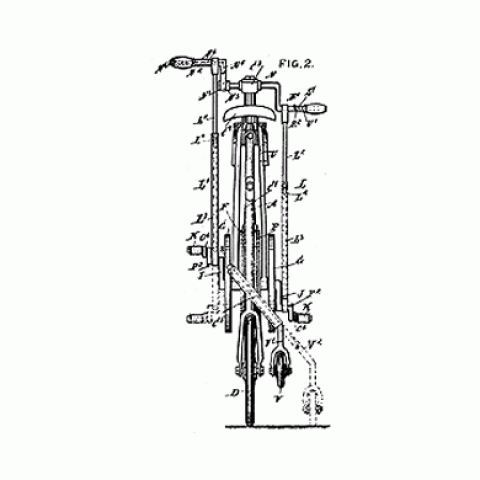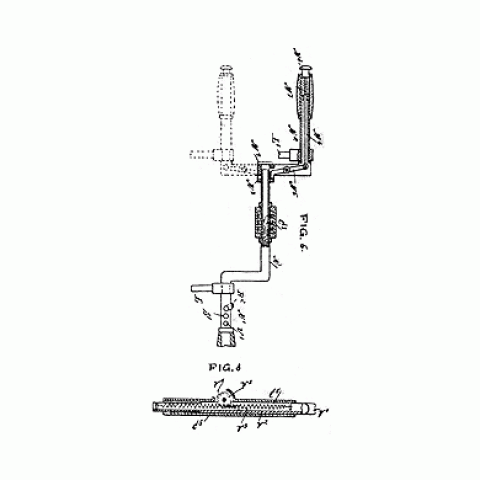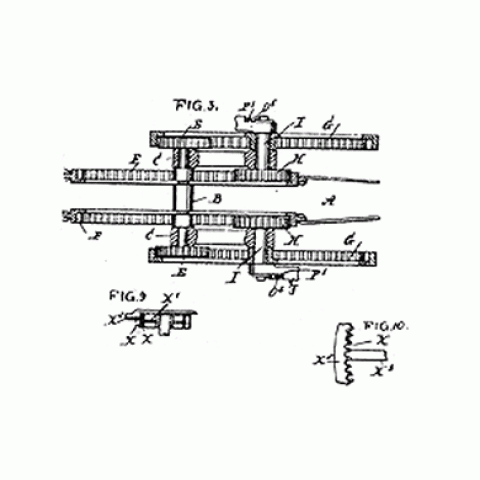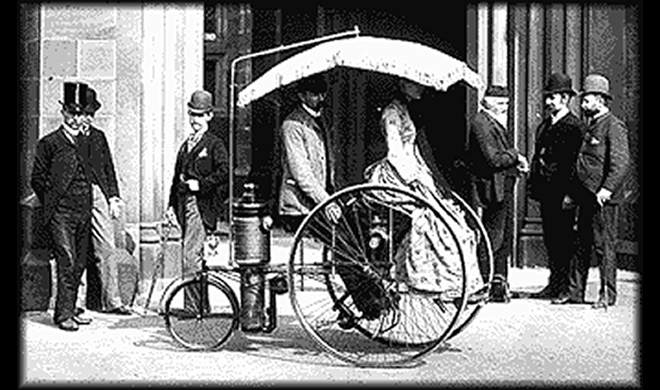
The late 1800s ushered in a huge bicycle boom, and people began to experiment with bicycle shapes and styles to suit the varying needs of the rider. Will this bicycle be used for racing or for recreation? How fast will the rider want to go? How comfortable should the rider be while riding? Is this bicycle safe to ride? These questions and much more led people to develop new technologies that would help evolve the bicycle from the high-wheel models seen in early pictures to some of the high-tech racing machines we have today.
In the last decade of the 19th century, at least one-third of all new patent applications at the U.S Patent Office were bicycle related. People focused the changes and improvements they made on what they thought bicycle riders wanted or required. Despite a varying degree of styles and models, four major focuses stood out from the rest: speed, safety, comfort, and endurance. When considering speed, people thought about how fast they wanted to ride their bicycles: is this bike for serious racing, or will it only be used for leisurely riding? Safety and comfort came under scrutiny, and soon after brakes, spokes, and cushion seats were incorporated into the anatomy of the bicycle. Later, the use of handbrakes, adjustment of handlebars, and development of special male and female seats added to safety and comfort features. When endurance or durability mattered and long races or distances were involved, the materials used to build the bicycle were retested or it was rebuilt with lighter material to better withstand wear and tear.
Many materials were experimented with so a bicycle would have just the right feel to it. Wood was used in most early models, but then people began fashioning bikes out of metal. When racing and traveling faster became more important, manufacturers began using aluminum piping for the frames, which was much lighter. Even though automobiles didn't catch on until the 20th century, people kept experimenting with how to make bicycles better, faster, and more powerful. The very first automobile was a tricycle that put a steam engine to use.
These pictures show a front and a back view of the very first automobile and people enjoying a ride on it. The vehicle was a tricycle equipped with a Lucius D. Copeland steam engine of 2600 R.P.M. and Silsby Type Boiler operating at 100 lbs. It used kerosene for fuel, and was built in Camden, New Jersey in 1887 by the Northrop Manufacturing Co.
Sewing machine factories had the equipment and skills to build bicycles, so some companies made the shift to this new, promising business. One such converted engineer was James Starley, one of the leading bicycle makers of his generation. Starley made a series of basic technological improvements that led to the development of the modern bicycle. As early as the 1870s, he devised ways to make steel tubing light yet strong enough to build bicycles. Later, he invented the "lever-tension" wheel, with metal rods attached between hub and rim. When the rods were tightened, the hub turned slightly, increasing the tension on the spokes in one simple movement.*
The drawings below are of John C. Raymond's bicycle, patented on June 20, 1899, in New York, NY. The text reads:
Be it known that I, JOHN CARLYLE RAYMOND, of New York, (Brooklyn,) in the county of Kings and State of New York, have invented a new and Improved Bicycle, of which the following is a full, clear, and exact description... The object of the present invention is to provide a new and improved bicycle arranged to permit a rider to conveniently change the gearing from a high speed to a low speed, or vice versa, and manipulate the bell and brake by means of electricity and to insure against being run into during the night by displaying a danger-signal from the rear.
The 1890s was known as the decade of the bicycle. Once prices became reasonable for most people (under $100 for a good bike), a social revolution occurred. Doctors and lawyers became indistinguishable from shopkeepers and tradesmen when they were all riding in uniform with their bicycle clubs. Young people found themselves able to pedal beyond their own neighborhoods, and a generation of women traded in their corsets for bloomers to make for easier riding. Bicycle progress continued, and the improvements that transformed the high-wheeled contraptions of the past to the sleek, comfortable designs of today make the bicycle a vehicle of continued technology.
*[From The American Bicycle. Pridmore and Hurd, 1995.]
Note: The objects pictured above are part of The Franklin Institute's protected collection of objects. The images are ©The Franklin Institute. All rights are reserved.


